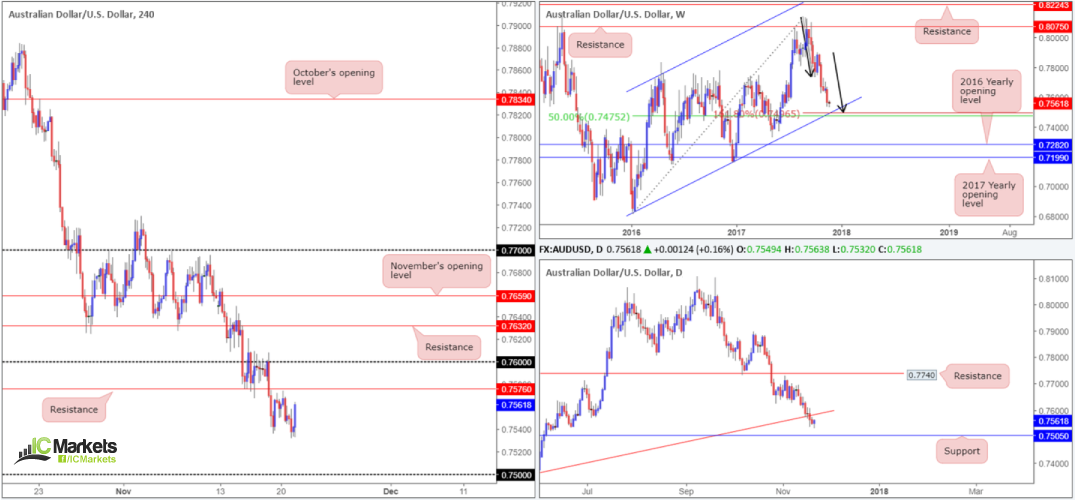‘It pays to know where you are in the bigger picture’.
We’re not entirely sure where this statement originated from, but it is certainly one that should be memorized.

What is a multi-timeframe approach?
It’s no secret that adopting a multi-timeframe approach can enhance your trading. The problem, however, is that some traders find it difficult to determine which timeframes to select, as well as how to go about using the method to its fullest. Hopefully, the following article will help clear this up.
Explaining what a multi-timeframe approach is may be best done using an analogy. Imagine driving down a poorly lit road in the evening with faulty headlights. Odds are that you’re likely to experience a bump, or worse, an accident, as it’s impossible to see what’s ahead! Well, this is exactly what you’re doing should you focus your attention on just one timeframe. Not knowing if you’re buying into a higher-timeframe resistance or trading against the overall trend, makes tackling the markets all that more difficult. As such, a multi-timeframe approach provides a way of observing the entire market you’re trading using additional timeframes.
What timeframes should you track?
Here’s where a lot of traders struggle to find their feet.
What timeframes one follows will depend on what the trading approach is. For example, are you an investor with long-term convictions, a swing trader that holds trades for a few days/weeks, or do you favour the intraday charts?
For the sake of this article, let’s say that you’re a trader that does not have much time to be at the computer and has adopted a swing trading method. You chose the H4 chart as your base timeframe. A base timeframe is simply one that you will enter trades from. Think of this timeframe as your go-to chart.
Once you have this in place, the next step is to select your partner timeframes. We usually appoint two additional higher timeframes to complement the base. Therefore, a good fit for a H4 base might be the daily timeframe and the weekly, or even monthly, timeframe.
It is said that a top-down approach is an objective way to analyse the markets, as you’re starting with a broader view and working your way down. While we agree with this statement, we don’t see much difference between beginning from the base and working up or starting from the top and working down. You end up with the same picture, regardless.
To conclude this section, here is a guide we follow when using a multi-timeframe approach. Granted, it may be simple, but it has held us in good stead thus far:
Long-term:
- Base timeframe: Daily chart.
- Initial timeframe: Weekly chart.
- Final timeframe: Monthly or the quarterly chart.
Swing trade:
- Base timeframe: H4 chart.
- Initial timeframe: Daily chart.
- Final timeframe: Weekly or monthly chart.
Intraday:
- Base timeframe: M15 chart.
- Initial timeframe: H1 chart.
- Final timeframe: H4 chart.
Setting up a trade
We are currently watching a trade that demonstrates why utilizing a multi-timeframe approach is so advantageous.
A lot of traders use the additional timeframes to gauge trend direction. Though this is certainly something we look at, there is much more one can harvest from this approach.
Comprised of a H4, daily and weekly timeframe, here is a quick snapshot of the AUD/USD chart:
Let’s start from the top and work our way down. On the weekly timeframe, we can see that there is an AB=CD 161.8% Fib ext. at 0.7496 that aligns with a 50.0% value at 0.7475 (taken from the high 0.8125). By and of itself, this is an attractive structure! In conjunction with weekly price, however, daily price shows little active demand to the left of current price, suggesting that a move down to support at 0.7505 may be on the cards. So, at this point, not only do you have strong weekly structure around the 0.75 neighbourhood; you also have a daily support as well. Things are looking good so far! Moving across to the H4 timeframe, the unit is seen trading beneath resistance at 0.7576. Also notable is the 0.75 handle seen below.
From this analysis, it should be clear that 0.75 represents a solid base to buy from. Yet, without bringing in the additional timeframes, 0.75 would have likely been just another psychological base to keep an eyeball on. With a multi-timeframe approach we’re able to see the true value 0.75 offers.
Given the recent move higher on the H4 scale, one could also surmise that the aforementioned H4 resistance is a worthy sell zone. We say this because both the weekly and daily timeframes show room for the market to move as low as 0.75. Nevertheless, the H4 resistance, at least for us, would require additional confirmation before pulling the trigger, whereas the 0.75 handle, depending on the time of day, would be good enough for a pending order.
What about an exit plan? Well, we personally try to keep it as simple as possible. We follow our base timeframe for partial exits and look to liquidate the full position at an opposing higher-timeframe zone. This typically allows one to maximise gains.
In closing
Adopting a multi-timeframe approach is, by far, a crucial aspect in our trading methodology. The thought of not being able to see where we’re trading from or what we’re trading into is not a position we would ever want to put ourselves in, so why should you?





